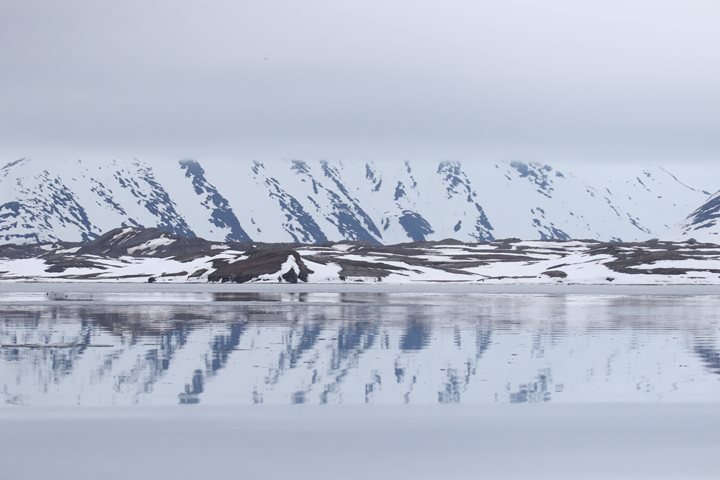Just before breakfast National Geographic Explorer anchored outside the narrow entrance to Hamburgbukta (“Hamburger Bay”). This is a one-kilometer long bay on the western side of Albert I Land in Spitsbergen. In 1642 some whalers from Hamburg, Germany, started their participation in the whaling industry by settling at Hamburgbukta. We entered the bay on a dead calm, sunny morning, and hikes were the first outdoor activity of the day. The scenery was magnificent. Short, medium, and long hikes were offered. Most of the ground was carpeted by a foot or so of snow, so rubber boots were a useful choice.
Thousands of little auks (also known as dovekies) were heard and seen as they were flying over our heads in the most impressive flight formations. A few traditional style fox traps were found on small mounds where the snow had melted. These are cultural heritage remains from previous trapping activity and are protected by strict regulations. Along the trail we also noticed fresh footprints of arctic fox as well as numerous geese on migration. The end of May and beginning of June is the peek for the three species of Arctic geese to arrive in Svalbard. A few eider ducks were also observed, and a handful of harbor seals were seen as their heads popped up just off the shore.
Just as we were heading north, a number of walruses were spotted from the bridge. Many guests went out on the bow to try to capture good photos of these amazing creatures. There were two groups of walruses that performed a great show. They captivated us with their swimming acrobatics at a very short distance from the ship.
After lunch we cruised northwards towards Fuglefjorden where Zodiac cruising and kayaking were offered. The kayakers zigzagged between small icebergs and icicles on a dead calm sea. The scenery was stunning, and many kayakers were reluctant to finish their paddling.
Just as the last kayaker was back a final activity was announced, the famous Polar Plunge. Twenty-one guests braved the cold Arctic water, and a few of them even proved that they could stand the extreme water temperature for more than one minute! The splashes from the brave plungers marked the end of a fantastic day of exploration in Svalbard. And there are more to come. Stay tuned!







